| ||
16 seats to the European Parliament | ||
|---|---|---|
European Parliament elections were held in Denmark on 15 June 1989 to elect the 16 Danish members of the European Parliament.
| ||
16 seats to the European Parliament | ||
|---|---|---|
European Parliament elections were held in Denmark on 15 June 1989 to elect the 16 Danish members of the European Parliament.
Seats are allocated first by the D'Hondt method to electoral coalitions (Social Democrats and Danish Social Liberal Party, Venstre and Conservative People's Party, People's Movement against the EEC and Socialist People's Party, Centre Democrats and Christian People's Party) and the remaining parties by themselves; then subsequently between the parties in each coalition.
| Party | Votes | % | Seats | +/– | |
|---|---|---|---|---|---|
| Social Democrats | 417,076 | 23.31 | 4 | +1 | |
| People's Movement against the EEC | 338,953 | 18.94 | 4 | 0 | |
| Venstre | 297,565 | 16.63 | 3 | +1 | |
| Conservative People's Party | 238,760 | 13.34 | 2 | –2 | |
| Socialist People's Party | 162,902 | 9.10 | 1 | 0 | |
| Centre Democrats | 142,190 | 7.95 | 2 | +1 | |
| Progress Party | 93,985 | 5.25 | 0 | 0 | |
| Danish Social Liberal Party | 50,196 | 2.81 | 0 | 0 | |
| Christian People's Party | 47,768 | 2.67 | 0 | 0 | |
| Total | 1,789,395 | 100.00 | 16 | +1 | |
| Valid votes | 1,789,395 | 98.78 | |||
| Invalid/blank votes | 22,163 | 1.22 | |||
| Total votes | 1,811,558 | 100.00 | |||
| Registered voters/turnout | 3,923,549 | 46.17 | |||
| Source: Folketingsårbog | |||||
| Main apportionment | ||||
|---|---|---|---|---|
| Letter | Electoral alliance/party outside of electoral alliance | Votes | Quotients | Seats |
| AB | Social Democrats/Danish Social Liberal Party | 467,272 | 4.97 | 4 |
| CV | Conservative People's Party/Venstre | 536,325 | 5.71 | 5 |
| DQ | Centre Democrats/Christian People's Party | 189,958 | 2.02 | 2 |
| FN | Socialist People's Party/People's Movement against the EEC | 501,855 | 5.34 | 5 |
| Z | Progress Party | 93,985 | 0.9998 | 0 |
| Divisor: 94,000 | ||||
| Alliance 1 | ||||
|---|---|---|---|---|
| Letter | Party | Votes | Quotients | Seats |
| A | Social Democrats | 417,076 | 4.17 | 4 |
| B | Danish Social Liberal Party | 50,196 | 0.50 | 0 |
| Divisor: 100,000 | ||||
| Alliance 2 | ||||
|---|---|---|---|---|
| Letter | Party | Votes | Quotients | Seats |
| C | Conservative People's Party | 238,760 | 2.65 | 2 |
| V | Venstre | 297,565 | 3.31 | 3 |
| Divisor: 90,000 | ||||
| Alliance 3 | ||||
|---|---|---|---|---|
| Letter | Party | Votes | Quotients | Seats |
| D | Centre Democrats | 142,190 | 2.37 | 2 |
| Q | Christian People's Party | 47,768 | 0.80 | 0 |
| Divisor: 60,000 | ||||
| Alliance 4 | ||||
|---|---|---|---|---|
| Letter | Party | Votes | Quotients | Seats |
| F | Socialist People's Party | 162,902 | 1.96 | 1 |
| N | People's Movement against the EEC | 338,953 | 4.08 | 4 |
| Divisor: 83,000 | ||||
In politics, a red–green alliance or red–green coalition is an alliance of "red" parties with "green" parties. The alliance is often based on common left political views, especially a shared distrust of corporate or capitalist institutions. While the "red" social-democratic parties tend to focus on the effects of capitalism on the working class, the "green" environmentalist parties tend to focus on the environmental effects of capitalism.

The prime minister of Denmark is the head of government in the Kingdom of Denmark comprising the three constituent countries: Denmark, Greenland and the Faroe Islands. Before the creation of the modern office, the kingdom did not initially have a head of government separate from its head of state, namely the monarch, in whom the executive authority was vested. The Constitution of 1849 established a constitutional monarchy by limiting the powers of the monarch and creating the office of premierminister. The inaugural holder of the office was Adam Wilhelm Moltke.

Poul Oluf Nyrup Rasmussen is a former Danish politician. He was Prime Minister of Denmark from 25 January 1993 to 27 November 2001 and President of the Party of European Socialists (PES) from 2004 to 2011. He was the leader of the governing Social Democrats from 1992 to 2002 and was also a member of the European Parliament from 2004 to 2009.
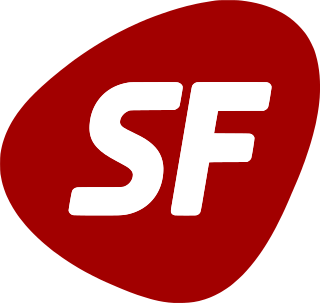
The Green Left is a democratic socialist political party in Denmark.

Venstre, full name Venstre, Danmarks Liberale Parti, is a conservative-liberal, agrarian political party in Denmark. Founded as part of a peasants' movement against the landed aristocracy, today it espouses an economically liberal, pro-free-market ideology.
The Social Democrats is a social democratic political party in Denmark. A member of the Party of European Socialists, the Social Democrats have 50 out of 179 members of the Danish parliament, Folketing, and three out of fourteen MEPs elected from Denmark.
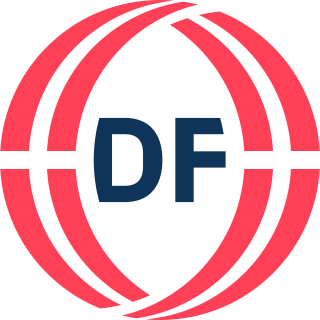
The Danish People's Party is a nationalist and right-wing populist political party in Denmark. It was formed in 1995 by former members of the Progress Party (FrP).

General elections were held in Denmark on 20 November 2001. For the first time since the 1924 elections, the Social Democrats did not win the most seats. Anders Fogh Rasmussen of the centre-right Venstre became Prime Minister in coalition with the Conservative People's Party, as the head of the first Rasmussen government, with the support from Danish People's Party.
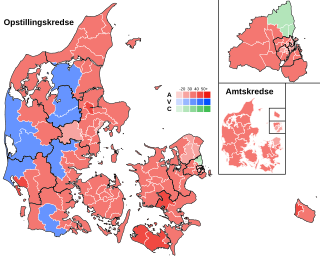
European Parliament elections were held in Denmark on 13 June 2004 to elect the 14 Danish members of the European Parliament. The opposition Social Democrats made major gains, mainly at the expense of Eurosceptic parties such as the June Movement.
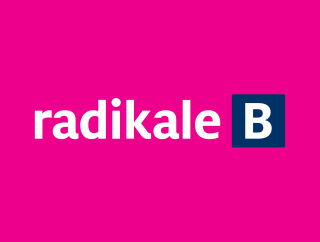
The Danish Social Liberal Party is a social-liberal political party in Denmark. The party was founded as a split from the Venstre Reform Party in 1905.

There are three types of elections in Denmark: elections to the national parliament, local elections, and elections to the European Parliament. Referendums may also be called to consult the Danish citizenry directly on an issue of national concern.

General elections were held in Denmark on 8 February 2005. Prime Minister Anders Fogh Rasmussen's Venstre remained the largest party in the Folketing and his governing coalition with the Conservative People's Party remained intact, with the Danish People's Party providing the parliamentary support needed for the minority government. The Danish Social Liberal Party made the biggest gains of any party, although it remained outside the governing group of parties. The elections marked the second time in a row that the Social Democrats were not the largest party in parliament, a change from most of the 20th century. The Social Democrats lost five seats and leader Mogens Lykketoft resigned immediately after the elections. Voter turnout was 85% in Denmark proper, 73% in the Faroe Islands and 59% in Greenland.

Helle Thorning-Schmidt is a Danish retired politician who served as the 26th Prime Minister of Denmark from 2011 to 2015, and Leader of the Social Democrats from 2005 to 2015. She is the first woman to have held each post. Following defeat in 2015, she announced that she would step down as both Danish Prime Minister and Social Democratic party leader. Ending her political career in April 2016, she was the chief executive of the NGO Save the Children until June 2019.
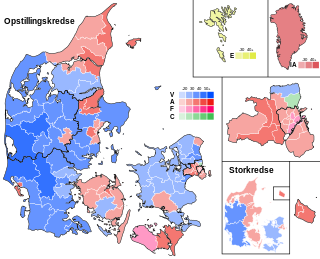
General elections were held in Denmark on 13 November 2007. The elections allowed prime minister Anders Fogh Rasmussen to continue for a third term in a coalition government consisting of Venstre and the Conservative People's Party with parliamentary support from the Danish People's Party. They were the first elections held using the current constituencies.

European Parliament elections were held in Denmark on 10 June 1999 to elect the 16 Danish members of the European Parliament.
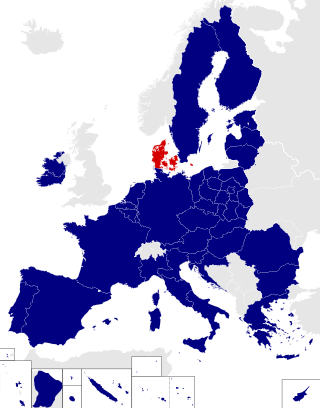
Denmark is a European Parliament constituency for the elections to the European Parliament covering the Member state of the European Union Denmark, but not other parts of the Danish Realm such as the Faroe Islands or Greenland, which are not a part of the EU. It is currently represented by fifteen Members of the European Parliament. Denmark uses the D'Hondt method of proportional representation. Electoral alliances between two or more parties are allowed.

General elections were held in Denmark on 15 September 2011 to elect the 179 members of the Folketing. Of those 179, 175 members were elected in Denmark, two in the Faroe Islands and two in Greenland.

European Parliament elections were held in Denmark on 9 June 1994 to elect the 16 Danish members of the European Parliament.
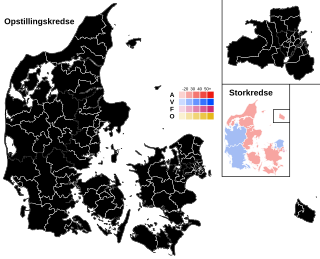
European Parliament elections were held in Denmark on 7 June 2009 to elect the 13 Danish members of the European Parliament. The election was held simultaneously with a referendum on changing the Danish Act of Succession.

The politics of Denmark take place within the framework of a parliamentary representative democracy, a constitutional monarchy and a decentralised unitary state in which the monarch of Denmark, King Frederik X, is the head of state. Denmark is a nation state. Danish politics and governance are characterized by a common striving for broad consensus on important issues, within both the political community and society as a whole.